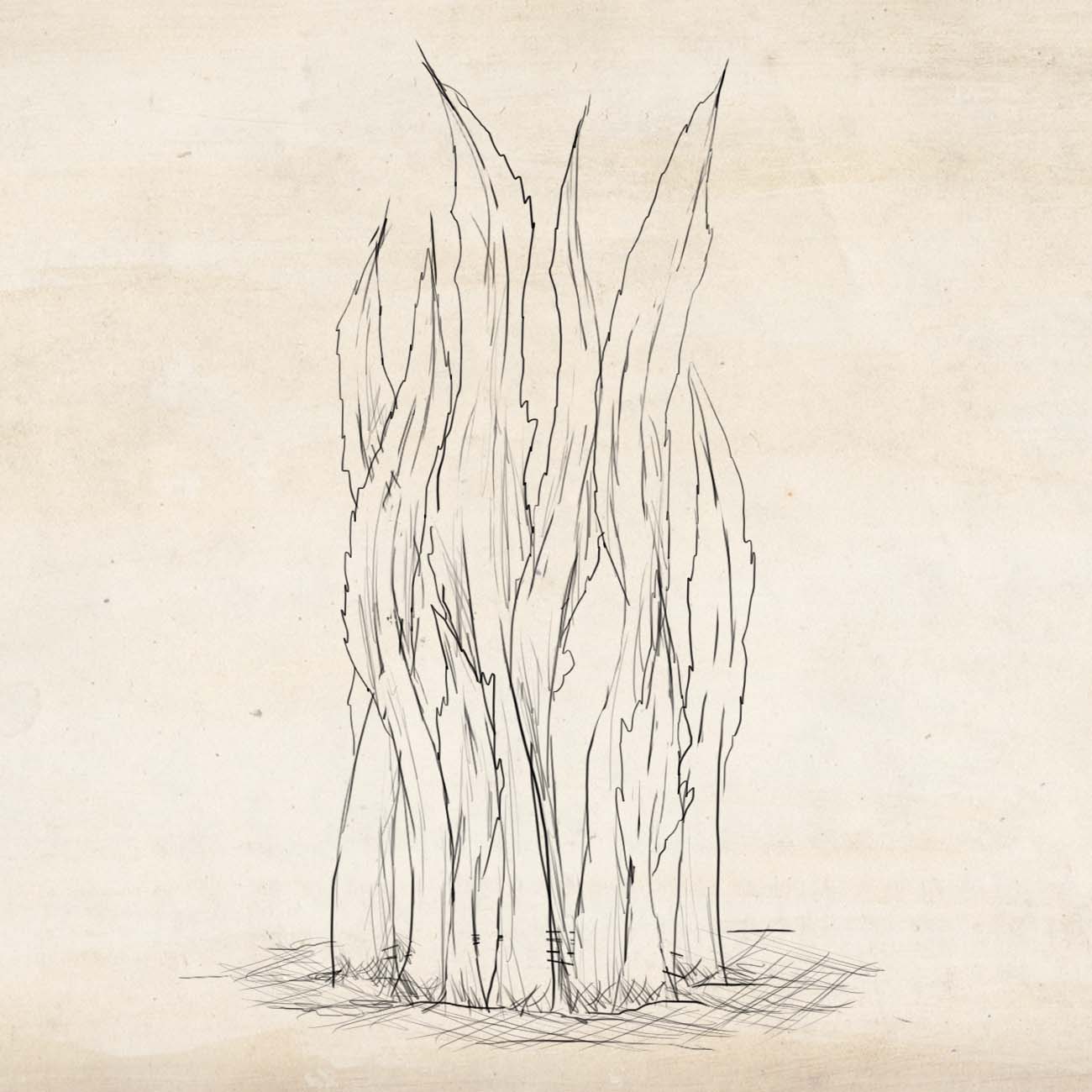Polyweed
Polyweed is a plant known for its communal lifestyle, in as creatures eat the stems, the plant constantly replenishes itself by planting new spores nearby. Occasionally, if a Polweed cluster detects a predator, the strands will move on their own and launch themselves into its eyes, attempting to make it back down.
Basic Information
Anatomy
Polweeds are tall, thin strands of plant fiber that live in tightly packed clusters. The top parts of the strands contain wide frills reminiscent of leaves, from which the plant mainly gets eaten. The tips of the strands are also very sharp in order to guard against careless carnivores.
Genetics and Reproduction
There are spore glands located at the base of the stems. When a strand of a cluster gets eaten or damaged, other strands will disperse a spore to replace it. Sometimes, a spore may land on a passing creature, where it will eventually fall off after a fair bit of travel, and grow on its own. There haven't been any records of the strands dispersing more than one spore at a time.
Growth Rate & Stages
Polyweed normally grow on the outsides of their cluster, where they will be under the protection of their parents. It has been found that certain clusters will grow no larger than a few dozen individuals, and all adults eventually reach similar heights regardless of age. If a strand gets carried away from its home cluster and is born elsewhere, it will have to fend for itself, slowly reproducing just to gain protection from threats.
Ecology and Habitats
Polyweed grow in the Fields, just about anywhere in the open sands. Polyweed clusters can often be found next to each other, sometimes forming even larger superclusters.
Dietary Needs and Habits
Polyweed are chemosynthetic just like most Nightlight Zone plants.
Scientific Name
Cirsium coetus
Lifespan
Unknown
Average Height
12 ft.
Average Weight
50 lbs
Body Tint, Colouring and Marking
Dark green bases, lighter green stems
Geographic Distribution
Remove these ads. Join the Worldbuilders Guild










Comments